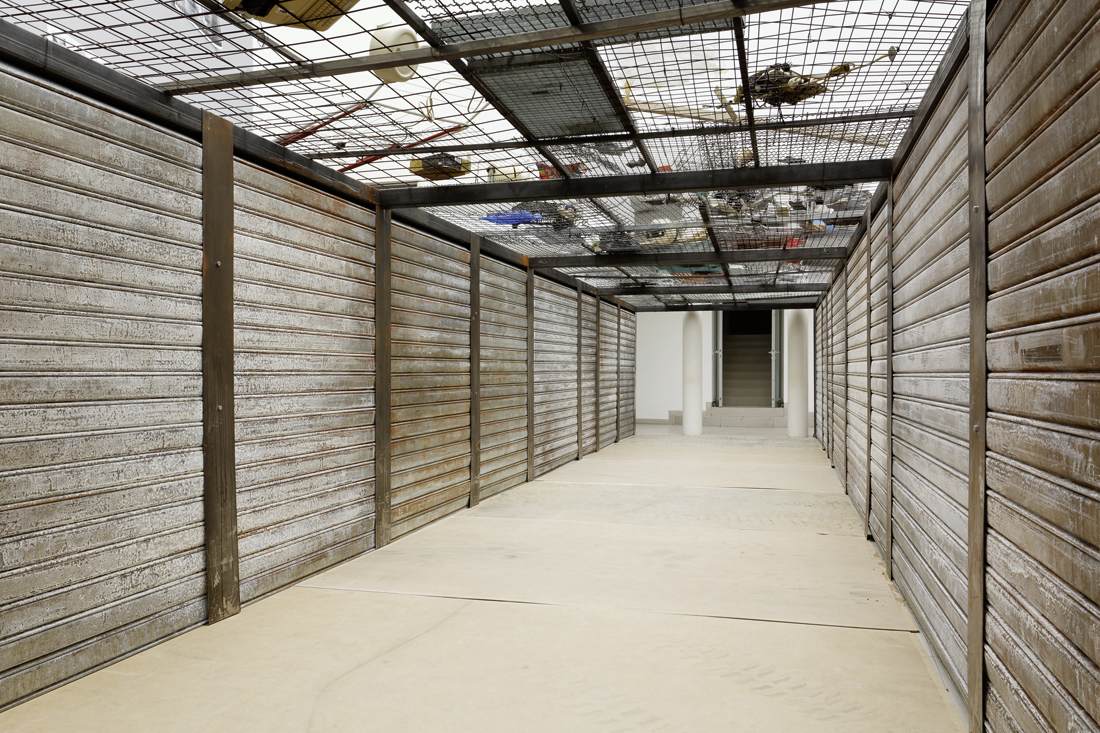Kader Attia
MMK Museum für Moderne Kunst, Frankfurt am Main, Germany
MMK Museum für Moderne Kunst, Frankfurt am Main, Germany

Viewers of Kader Attia’s evocative installation at dOCUMENTA 13 (2012) might recall that reparation is one of the artist’s passionate commitments. For The Repair from Occident to Extra-Occidental Cultures (2012), Attia hung photographs of the mutilated faces of World War I soldiers alongside similarly deformed wooden busts crafted by Senegalese woodcutters. In that work, Attia suggested that the physical deformities of the modern age had their counterpart in Cubism’s body contortions, which for their part – according to art historian Carl Einstein – originated long before in the African art of geometrically styled woodcarving. These oversized heads on high pedestals were also the core element in Attia’s exhibition ‘Sacrifice and Harmony’ at Museum für Moderne Kunst in Frankfurt am Main. Here, they were combined with the 1918 film J’accuse by French director Abel Gance, an enduring expression of terror in which the 12 million people who died in World War I are called upon to rise from the grave.
Attia’s strengths lie in such cross-cultural collage of injury and trauma. He presented a formal link between Edvard Munch’s painting The Scream (1893–1910) and a sick person’s mask stemming from West Africa’s Pende tribe. Faces of individuals made to suffer by war are juxtaposed with similarly deformed figures in antique sculptures – pathos formulated to invoke the ‘sacrifice’ referred to in the exhibition title. Attia approaches these and other injured individuals with a methodology of ‘repair’.
Repair Analysis (2013) presents broken mirrors, the shards of which are held together by metal staples in roughly rendered seams – the viewer can imagine these piercing his or her own body. Repair is presented here as an artistic program, as when Attia culls damaged objects from the developing world: the missing piece of a scooter, for instance, replaced by cardboard and imaginatively redesigned (When Cardboard Repairs Plastic, 2013).
Attia’s program, however, goes further: he polemically reintroduces cultural forms and techniques of repair from non-European societies to a Western art context. Attia is interested in many different processes of tearing and rejoining, from Berber brooches piercing canvases (Injury Reappropriated, 2014), slit drum skins elevated to wall reliefs (Untitled, 2016), to a wooden piece by West Africa’s Bambara tribe with breast shapes placed between two arm prostheses, resulting in a humorous figure (Untitled, 2016). Even more, in the demand for reparations, Attia does not merely research the differing cultural treatment of objects, but also asserts their equality. This sense of equality underpins his juxtapositions of found pieces from North Africa with Western objects. And it’s the reason why Attia videotapes philosophers and ethno-psychiatrists of African heritage as they talk about non-western personal and collective concepts of the self and concomitant therapeutic methods (Reason’s Oxymorons, 2015). He introduces the idea of counter-carving, counter-narrative and repair by exhibiting the ostracized, disfigured and newly mended into an exhibition context that seems otherwise pristine. As such, Attia renders visible historical texture and its weathered surfaces, lamenting the ‘politics of fear’ that resonates in the flawless white of the exhibition space, and unleashing a troop of monsters to rail against this.

As he did in his contribution to Dak’Art biennial in Dakar, Senegal, Attia uses the letter ‘V’ not as ‘victory’ but as an epistemological figure of branching and splitting, joining and holding together. The ‘V’ grows out to form trees of slingshots and catapults that recall the Intifada: in a reversal of Deleuze and Guattari’s theory of the ‘rhizome’, he discovers The Endless Rhizomes of Revolution (2016) precisely in their binary tree structure.
In a literal sense, Attia’s ‘reparation’ elevates the call to symbolic recognition, repair and reencounter in its dual senses of ‘again’ and ‘against’: bound to one another in conflict. This is the meaning of his reconstruction of a corrugated tin corridor with a metal covering (Los de Arriba y Los de Abajo, those from above and those from below, 2015) in Hebron that Palestinian residents passed through and Jewish residents tossed their garbage onto. Unfortunately, Attia seeks to solve this problem in a benevolent way by assembling various fragments into a sphere, a ‘harmony’, by stapling them together in a regular, orderly way (Chaos + Repair = Universe, 2014). He doesn’t want to stop at the accusation – yet his artistic statements are at their most convincing when they use found objects collected in a variety of places to attempt to reconcile that which is never entirely attainable.
Translated by Andrea Scrima
























